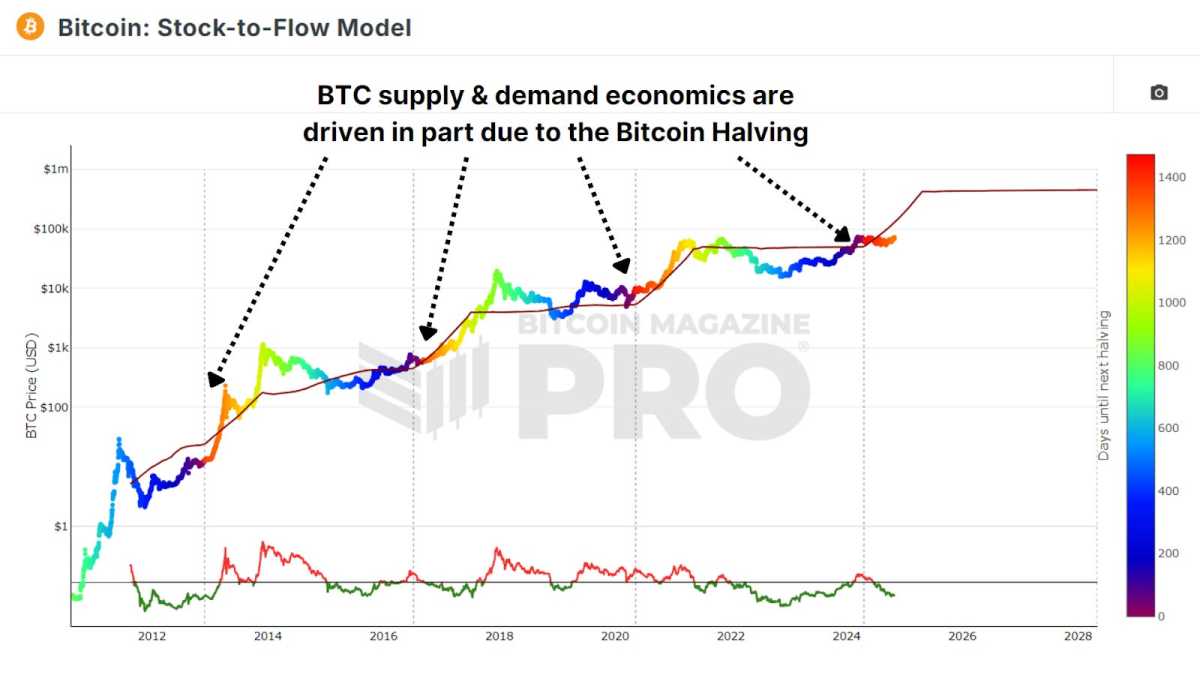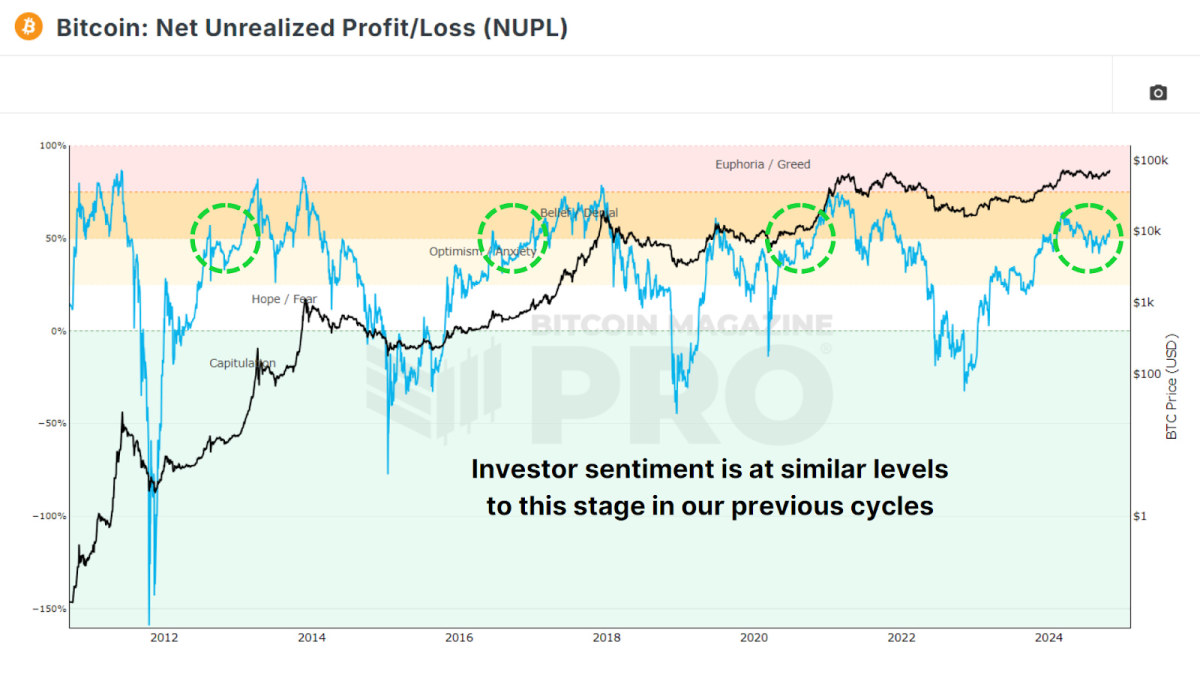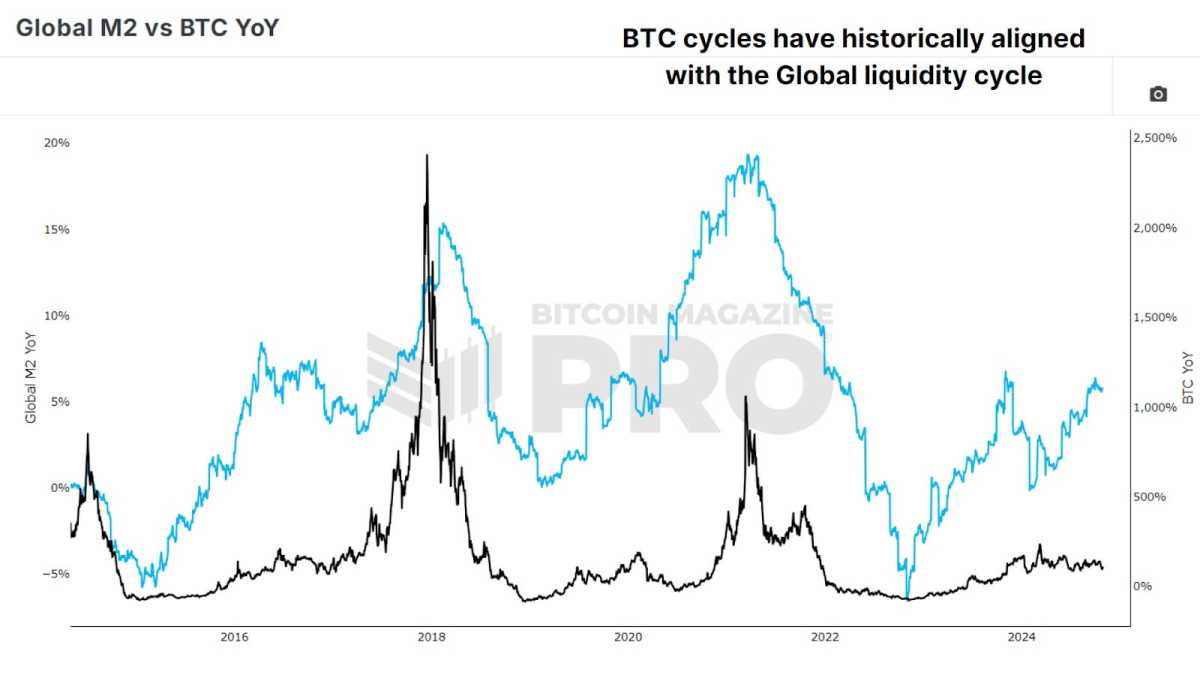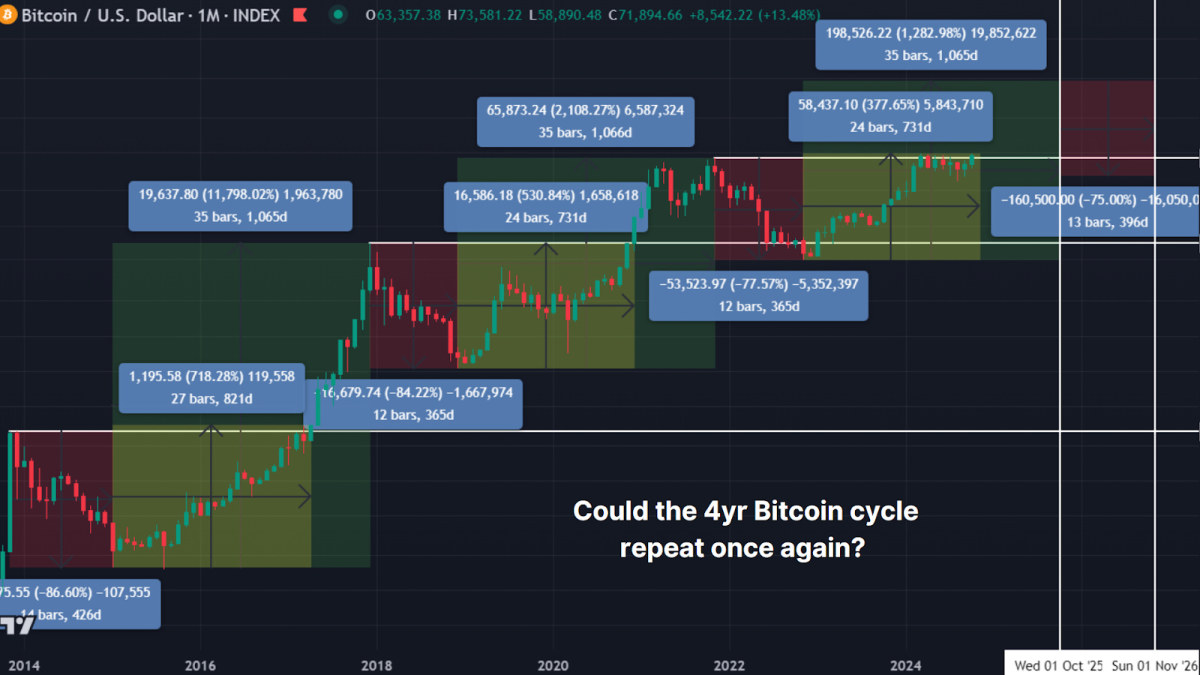Halfway through the 4-year Bitcoin cycle

Bitcoin has historically followed a familiar four-year cycle. Now two years into the current cycle, investors are closely watching patterns and market indicators to gain insight into what the next two years might hold. This article takes a closer look at Bitcoin’s four-year cycle, past market behavior, and future possibilities.
4 year cycle
Bitcoin’s four-year cycle is partly influenced by scheduled halving events. As a result, the block reward miners receive is reduced by 50% every four years. These halvings reduce the supply of new Bitcoin entering the market, creating supply and demand pressures that can often push prices higher.
This can be clearly visualized with a Stock-to-Flow model, which compares existing BTC in circulation to the rate of inflation and models its ‘fair value’ based on similar real assets such as gold and silver.

Currently we are in the middle of this cycle. This means that following the typical one-year catch-up phase following the halving, we are entering a period of potentially exponential profits.
Looking back at 2022
Two years ago, Bitcoin faced a major collapse due to a series of corporate collapses. November 2022 marked the downfall of FTX as rumors of bankruptcy sparked a massive sell-off. The domino effect was brutal as other cryptocurrency institutions such as BlockFi, 3AC, Chelsea and Voyager Digital also collapsed.

The price of Bitcoin plummeted from around $20,000 to $15,000, reflecting panic in the market and leaving investors worried about Bitcoin’s survival. But in fact, Bitcoin has bounced back and is now five times higher than its 2022 low. Investors who weathered the storm have been rewarded, and the rebound supports the argument that Bitcoin’s cyclical nature remains intact.
similar feelings
In addition to price patterns, investor sentiment follows a predictable rhythm throughout each cycle. Analyzing net unrealized profits and losses (NUPL), an indicator of unrealized profits and losses in the market, we see that emotions such as euphoria, fear and surrender recur regularly. Bitcoin investors typically face extreme fear or pessimism during each bear market, but then return to optimism and euphoria as the price recovers and rises. Currently, we are once again entering the ‘Belief’ phase, following the initial cycle preparation and subsequent consolidation.

Global Liquidity Cycle
Global money supply and circulating liquidity, measured as Global M2 YoY relative to BTC, also follow a four-year cycle. For example, M2 liquidity hit bottom in 2015 and 2018, just as Bitcoin hit bottom. In 2022, M2 reached its lowest point again, perfectly coinciding with Bitcoin’s bear market bottom. After this period of economic contraction, we can see fiscal expansion across central banks and governments everywhere, leading to more favorable conditions for Bitcoin price growth.

familiar pattern
Historical price analysis shows that Bitcoin’s current trajectory is strikingly similar to previous cycles. From a low, it typically takes about 24 to 26 months for Bitcoin to break above its previous high. My last cycle took 26 months. In this cycle, the Bitcoin price is on a similar upward trajectory after 24 months. Bitcoin has historically reached its peak approximately 35 months after its lowest point. If this pattern holds, we could see significant price gains until October 2025, after which another bear market could begin.
After the expected peak, history shows that Bitcoin will enter a bearish phase in 2026, which will last for about a year until the next cycle begins anew. These patterns are not guaranteed, but they provide a roadmap that Bitcoin has adhered to in previous cycles. This provides a potential framework for investors to anticipate and adapt to the market.

conclusion
Despite challenges, Bitcoin’s four-year cycle has persisted, largely due to supply schedule, global liquidity, and investor sentiment. Therefore, the four-year cycle remains a useful tool for investors to interpret Bitcoin’s potential price movements and the base case for the remainder of this cycle. However, relying solely on this cycle may be short-sighted. By integrating on-chain indicators, liquidity analysis, and real-time investment sentiment, a data-driven approach can help investors respond effectively to changing circumstances.
To learn more about this topic, check out our recent YouTube video here. 4 Year Bitcoin Cycle – Is It Halfway Over?

